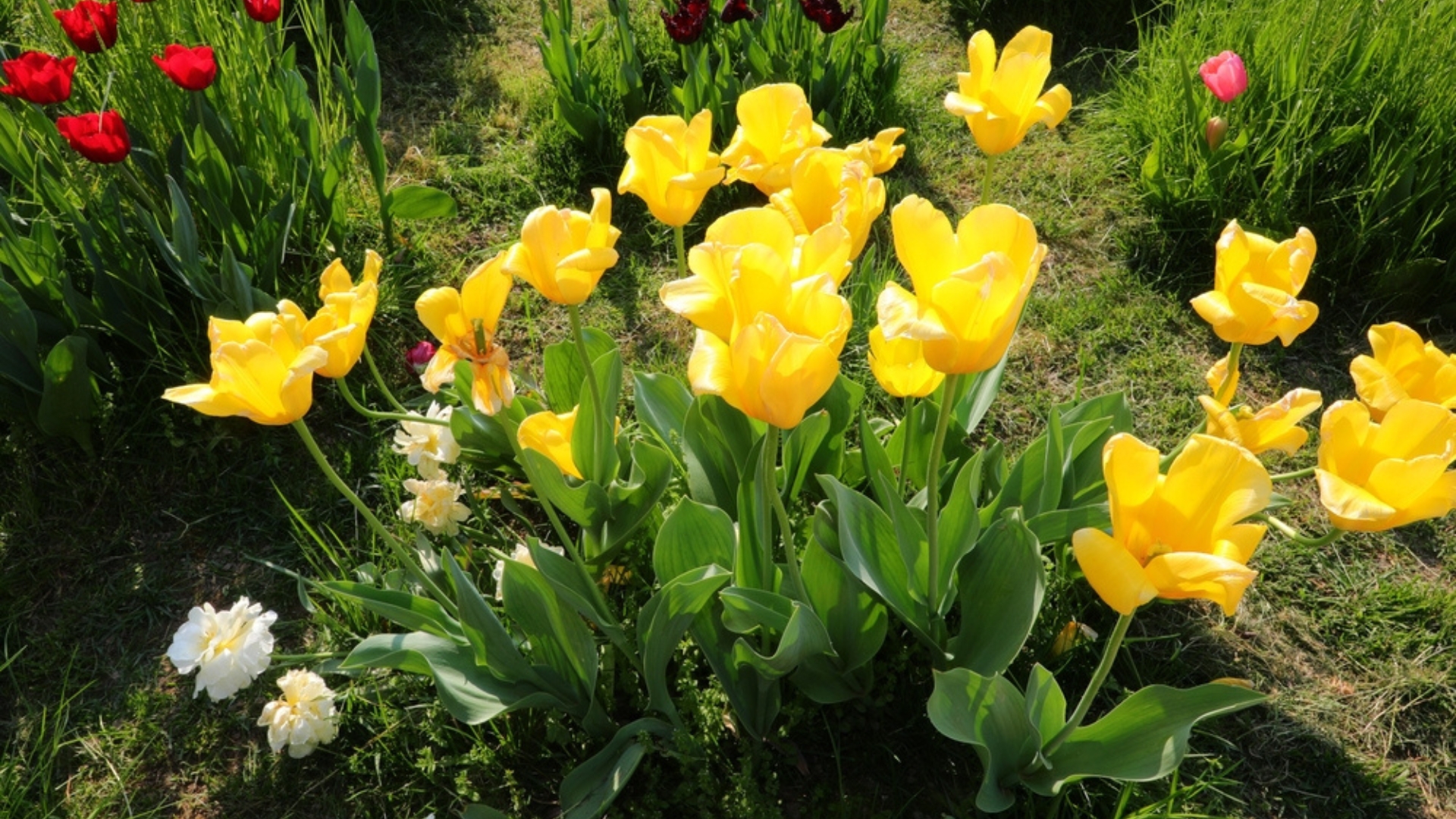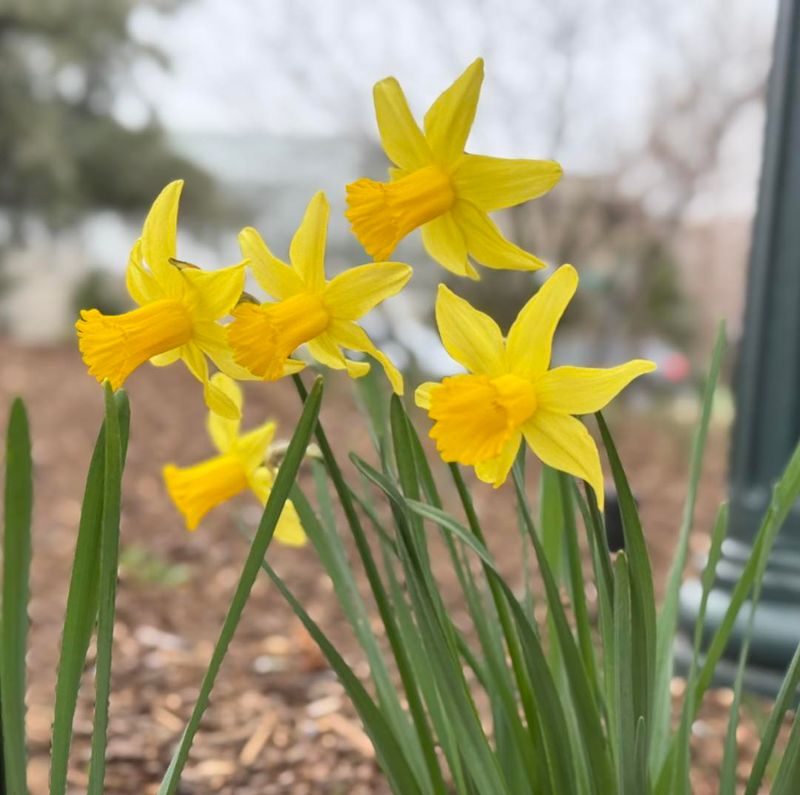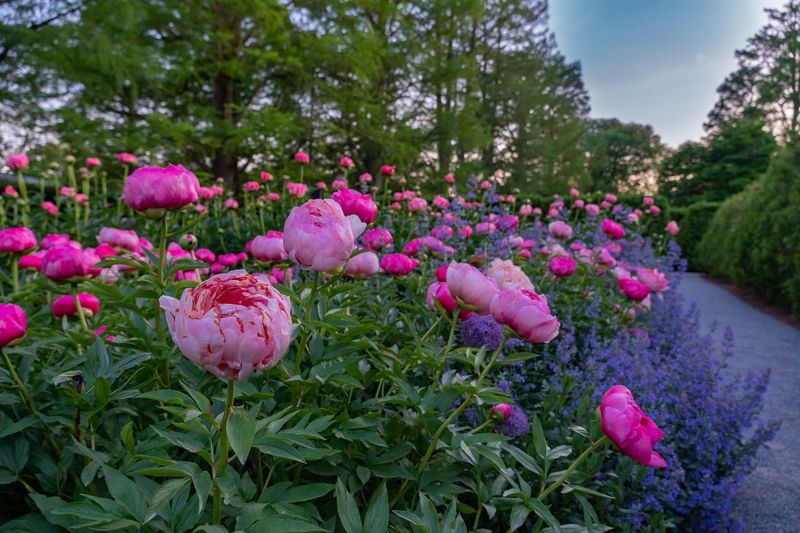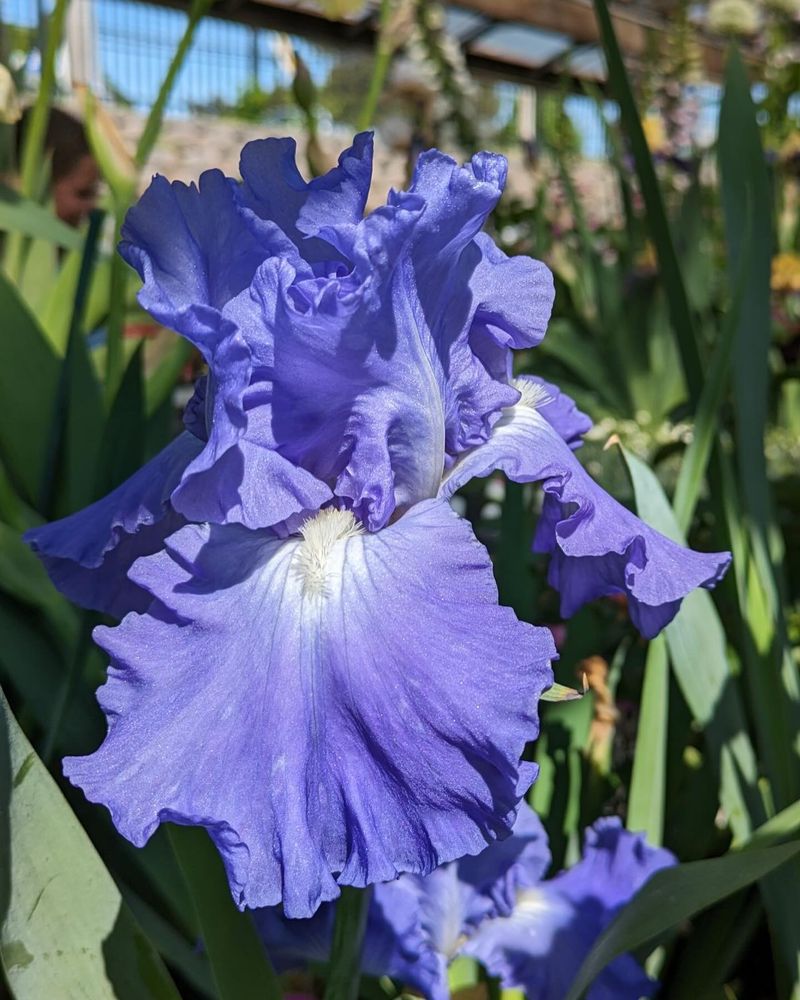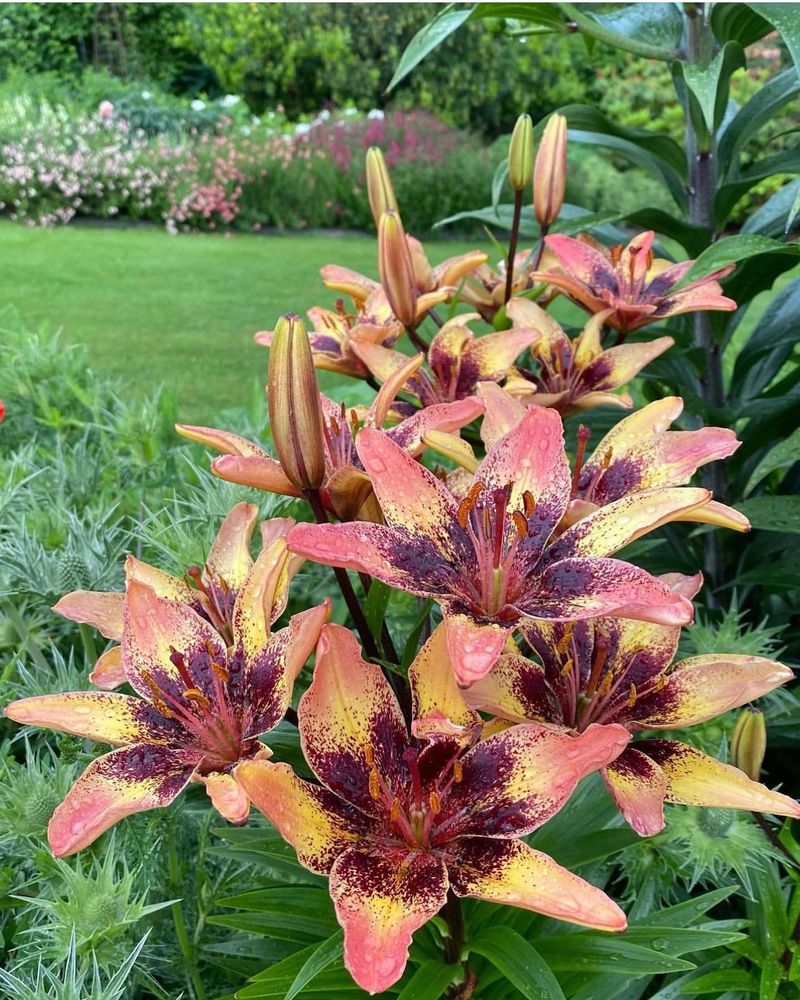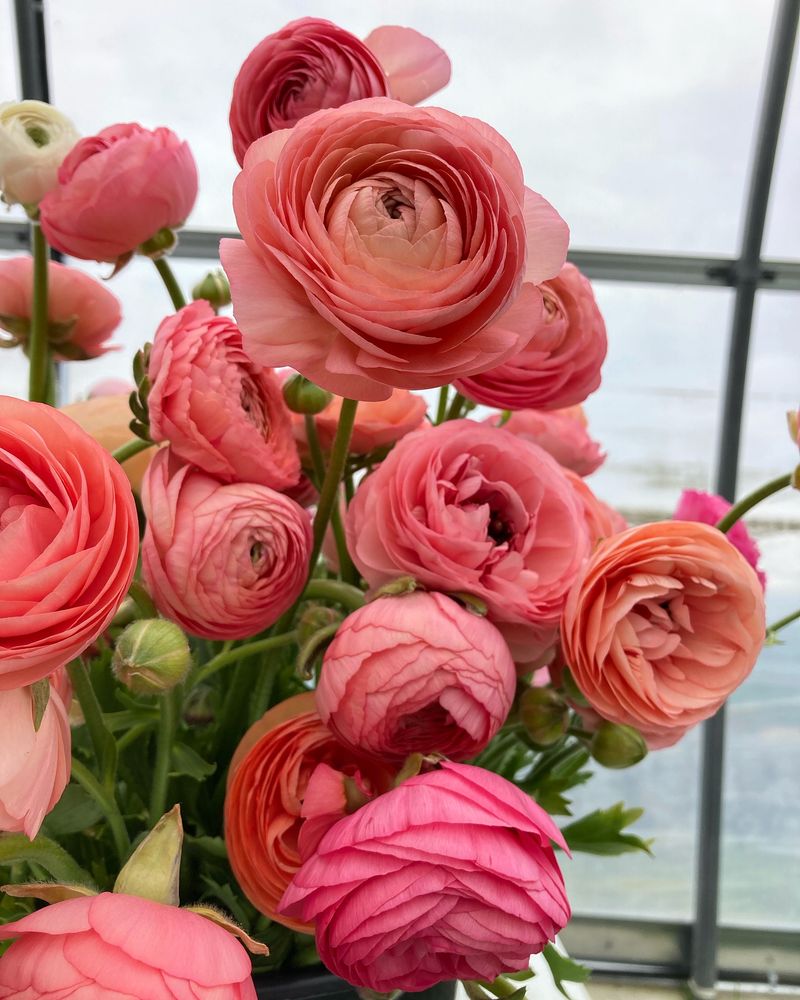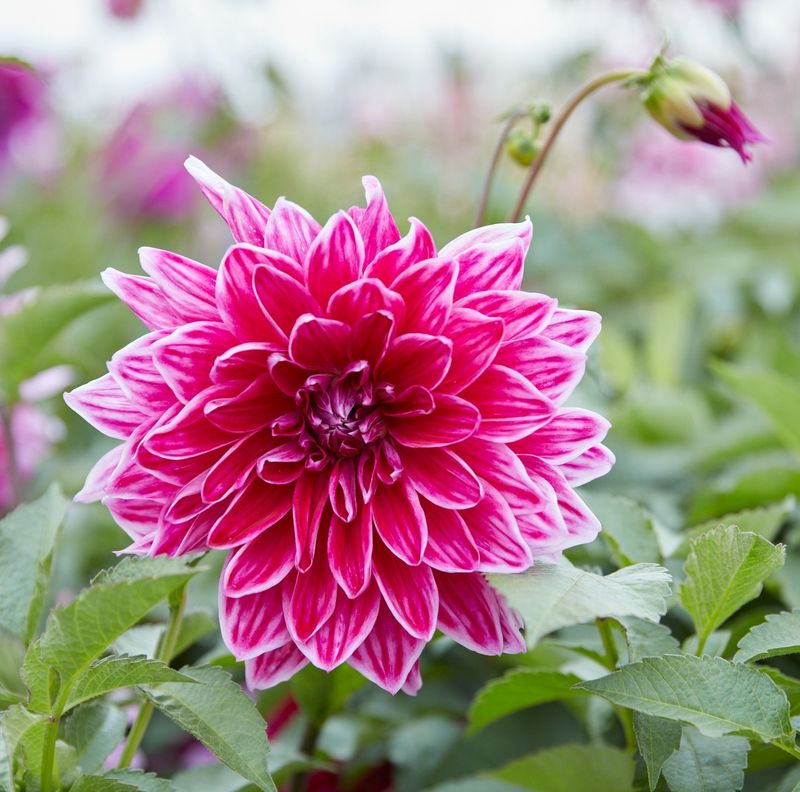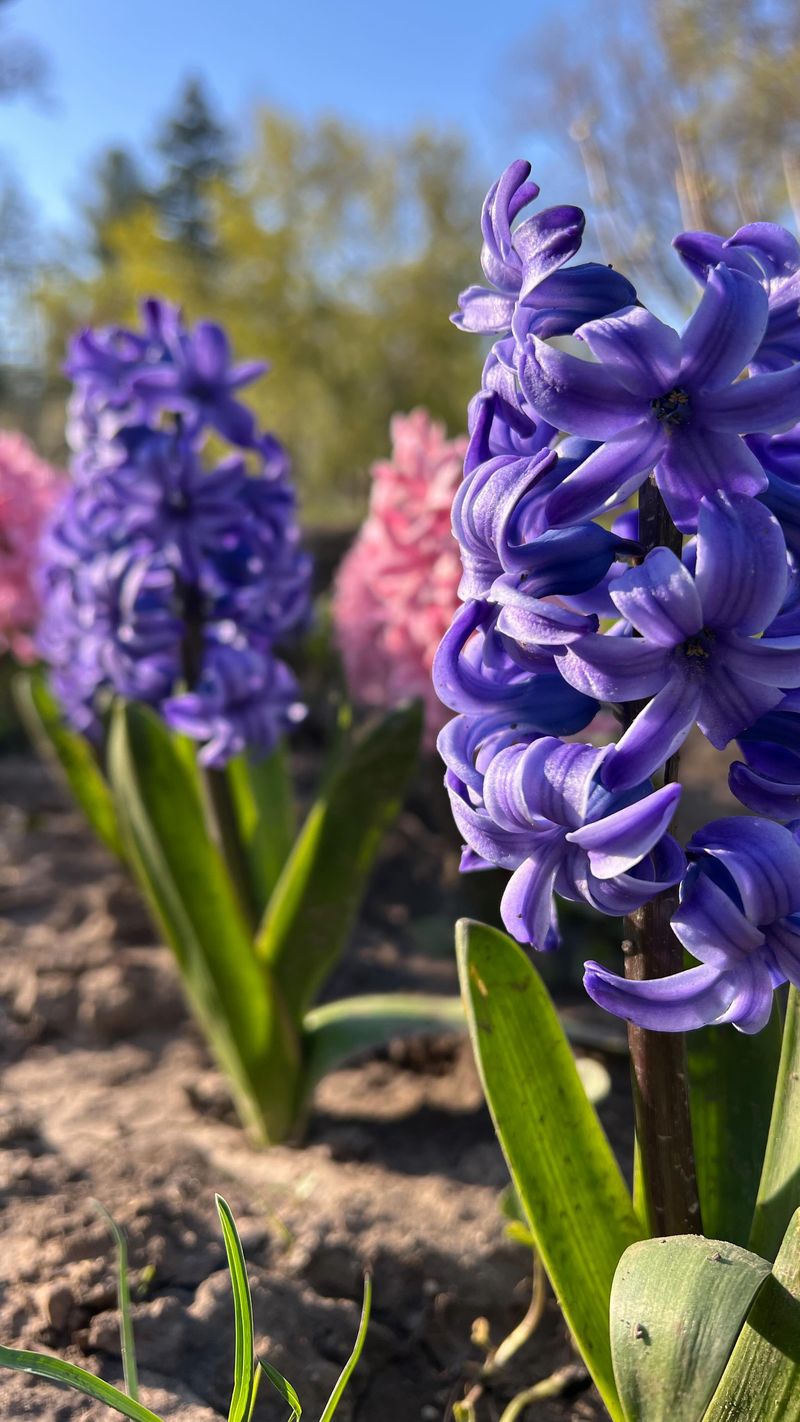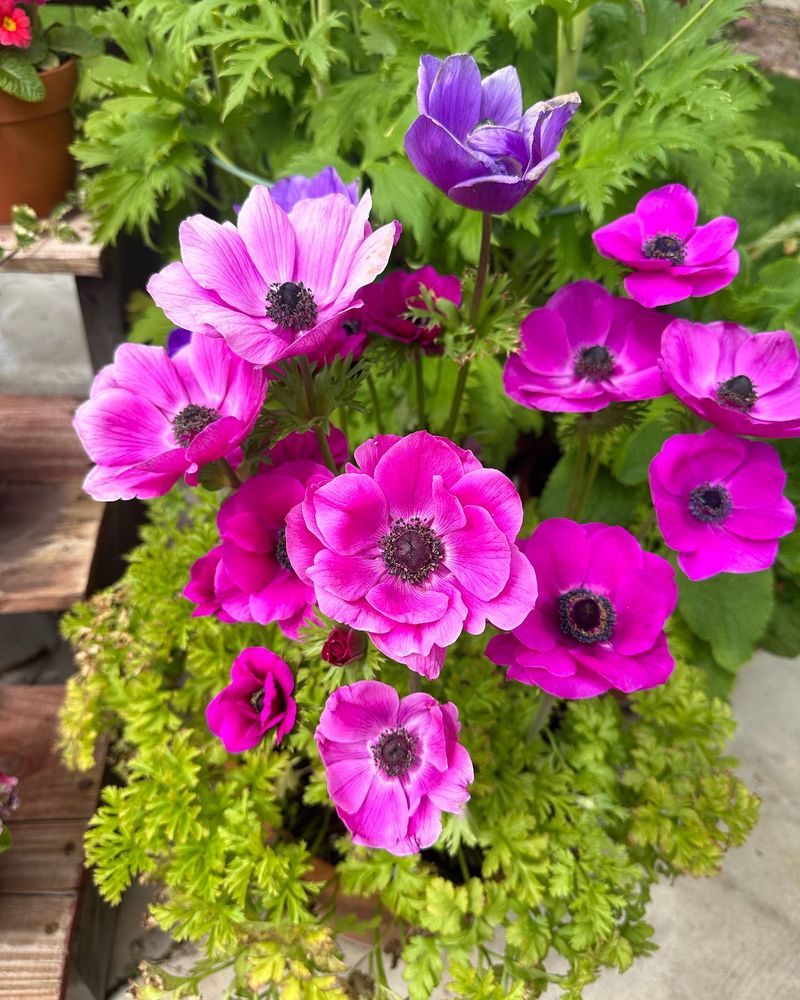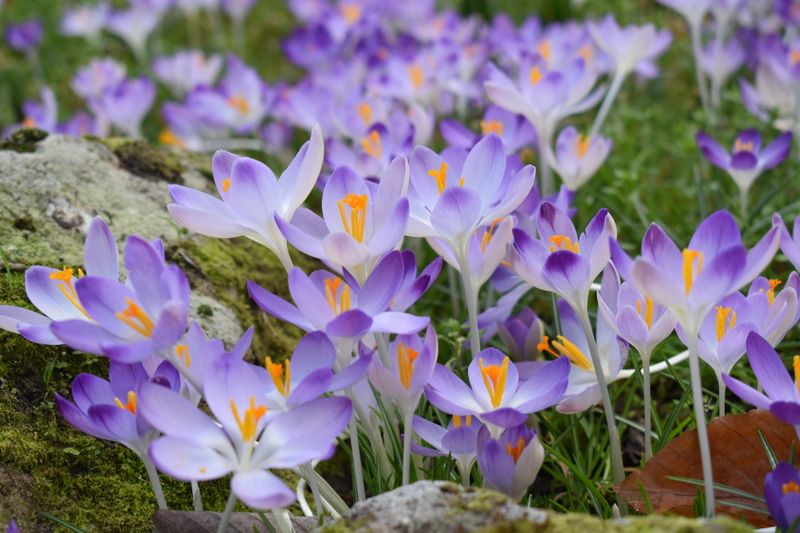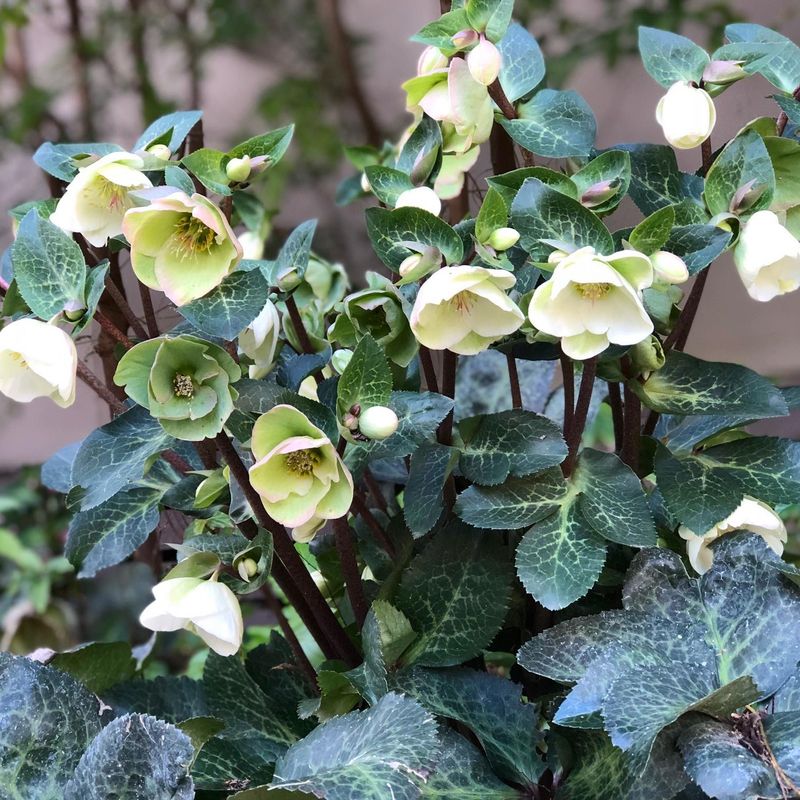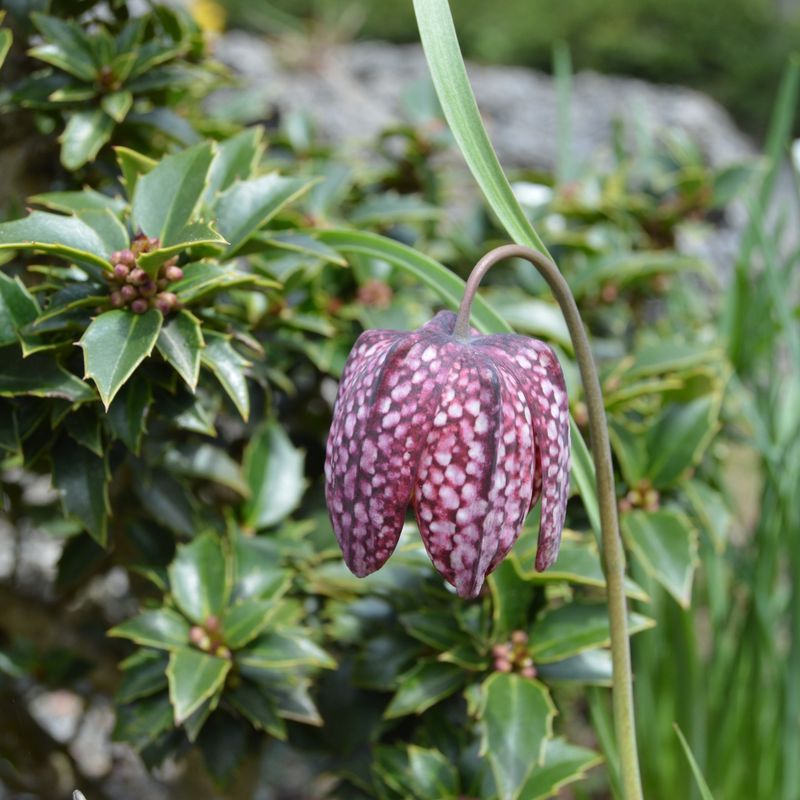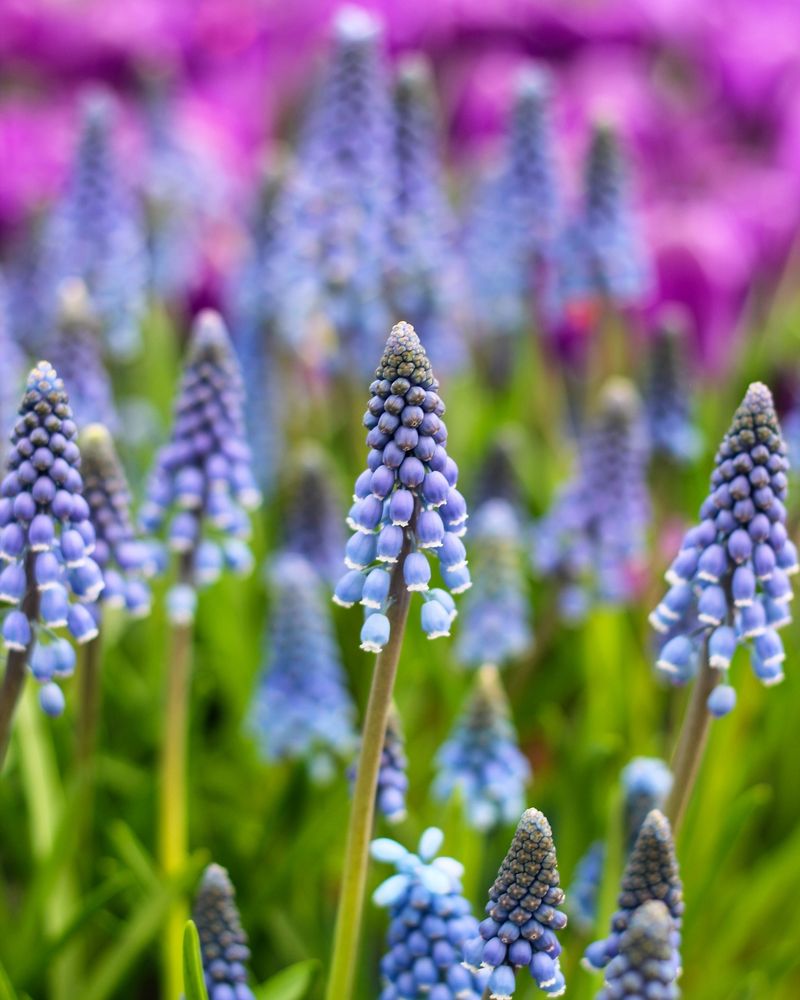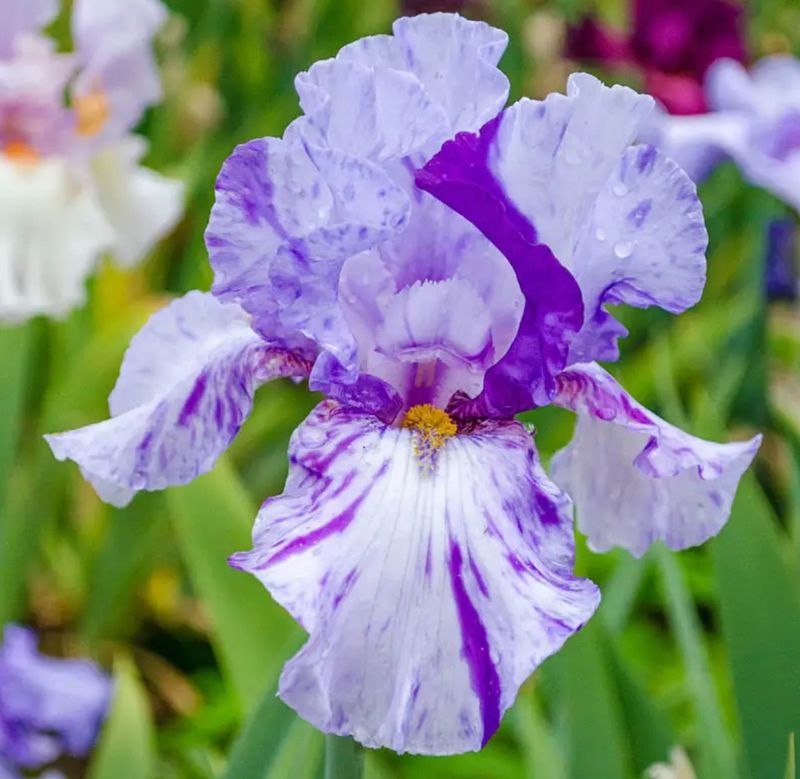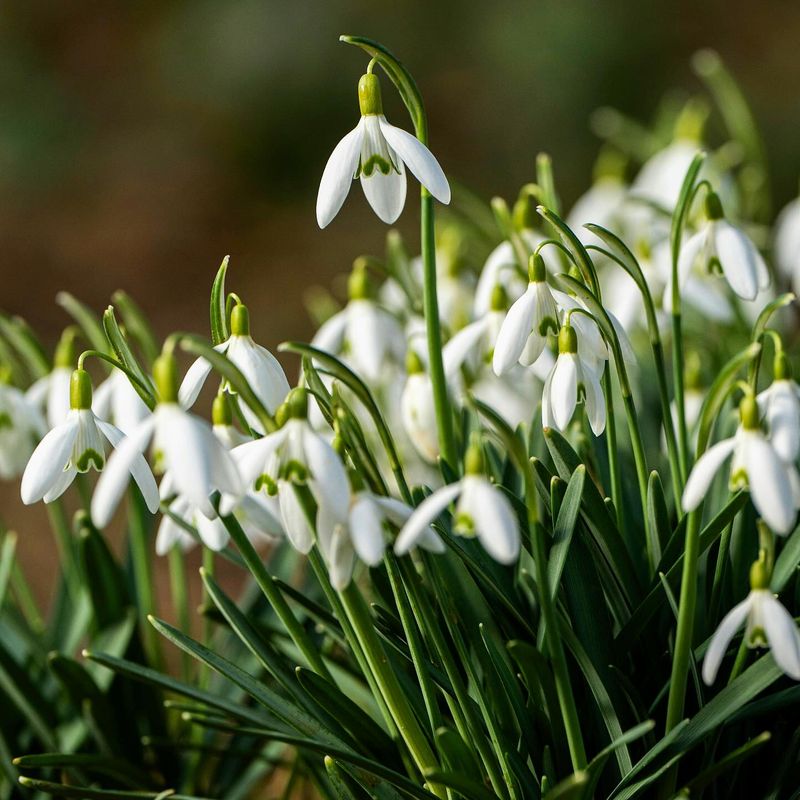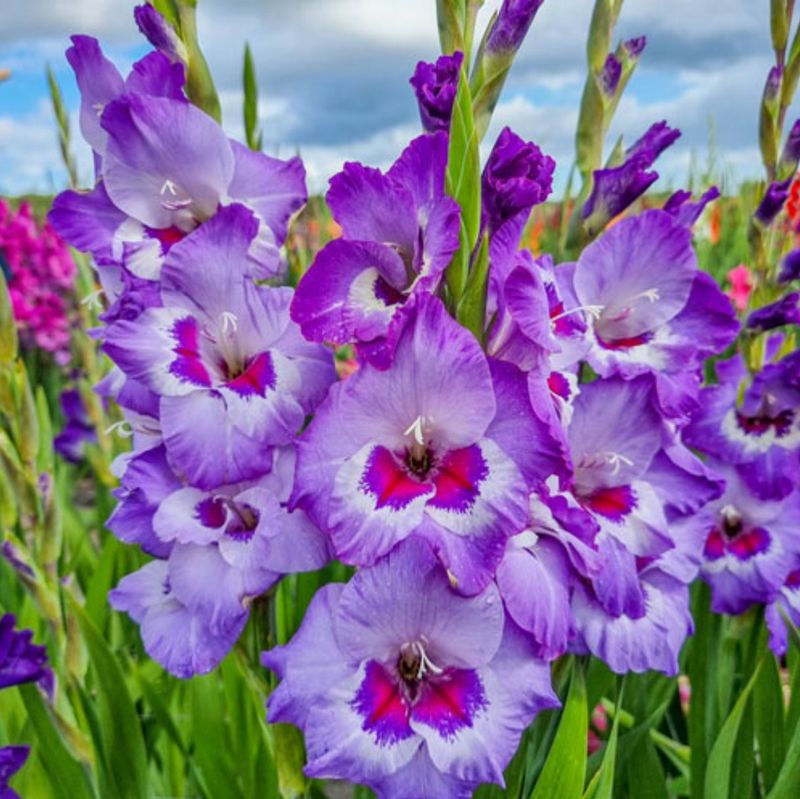Looking for something different to brighten up your garden this year? While tulips are popular spring bloomers, there’s a whole world of stunning plants waiting to be discovered. From low-maintenance perennials to exotic-looking flowers, these alternatives can transform your garden with unique colors, textures, and blooming periods that might just make you forget about tulips altogether.
1. Daffodils: Cheerful Spring Messengers
Nothing announces spring quite like the bright yellow faces of daffodils nodding in the breeze. These hardy bulbs return year after year with almost no effort on your part, multiplying into impressive clusters over time.
Unlike fussy tulips that often fade after a season or two, daffodils are truly plant-it-and-forget-it flowers. Plus, deer and squirrels typically avoid them because of their bitter taste, solving a common garden headache.
With varieties ranging from classic yellow trumpets to delicate white and pink cups, there’s a daffodil for every garden style.
2. Alliums: Purple Globes on Stems
Imagine perfect spheres of tiny star-shaped flowers floating above your garden beds. That’s the magic of alliums! Related to onions but way more glamorous, these architectural beauties create instant drama with their perfectly round flower heads.
Plant the bulbs in fall, and by late spring you’ll have purple, white, or pink globes that seem to hover in mid-air on tall, slender stems. The seed heads that follow are just as decorative, lasting well into winter.
Bees absolutely adore alliums, making them a win for pollinators too!
3. Peonies: Fragrant Heirloom Blooms
Grandma knew what she was doing when she planted peonies! These fragrant powerhouses produce massive, ruffled blooms that can fill your home with their sweet scent. Some peony plants live for 100+ years, becoming family heirlooms passed down through generations.
While they bloom for only a few weeks each spring, their glossy foliage stays attractive all summer. The range of colors is impressive – from pure white to coral, pink, and deep burgundy.
A single established peony plant can produce dozens of blooms for cutting, making them excellent value despite their short flowering period.
4. Irises: Elegant Garden Aristocrats
Named after the Greek goddess of the rainbow, irises live up to their divine inspiration with an incredible color range. Their unique flower form features three upright petals (standards) and three drooping petals (falls), creating a distinctive silhouette unlike any other garden flower.
Bearded irises, with their fuzzy “beards” on the falls, are particularly dramatic. These tough plants thrive in spots where other flowers struggle, even tolerating poor soil and drought once established.
For maximum impact, group irises in masses of the same color or create a rainbow effect with different varieties.
5. Lilies: Statuesque Summer Stars
Few flowers make a statement like lilies with their trumpet-shaped blooms and intoxicating fragrance. Unlike spring-only tulips, lilies bloom in summer when many gardens need a color boost, and their tall stems (up to 6 feet for some varieties) add vertical interest to any planting.
Asiatic lilies offer bold colors and easier care, while Oriental lilies deliver knockout fragrance that can perfume an entire garden. Plant the bulbs in fall or spring, making sure they have good drainage.
For continuous blooms, mix early, mid, and late-season varieties to enjoy lilies from June through September.
6. Ranunculus: Paper-Like Perfection
Ever seen those impossibly perfect flowers that look almost too good to be real? That’s ranunculus! With layer upon layer of tissue-thin petals in candy colors, these blooms look like they belong in a fairy tale.
Beloved by florists for their long vase life, ranunculus also perform beautifully in gardens with good drainage. In mild climates, plant the claw-shaped corms in fall; in colder areas, start them indoors in late winter.
The blooms close at night and open with the sun, giving you a daily show of unfurling beauty that lasts for weeks in spring.
7. Dahlias: Late-Season Show-Stoppers
When summer flowers start to fade, dahlias are just hitting their stride! These Mexican natives produce dinner-plate sized blooms (or tiny pom-poms, depending on the variety) from midsummer until frost, giving you months of flowers from a single planting.
Available in virtually every color except true blue, dahlias range from softball-sized pompoms to giant 12-inch dinner plate varieties. Their sturdy stems make them perfect for cutting gardens.
In cold climates, dig up the tubers after the first frost, store them in a cool, dry place, and replant in spring for years of blooms.
8. Hyacinths: Fragrant Spring Treasures
Walking through a garden with blooming hyacinths is an unforgettable sensory experience! Their intense fragrance can perfume an entire yard, while their tightly-packed florets create columns of color in early spring.
Plant hyacinth bulbs in fall, positioning them near walkways or entrances where their sweet scent can be appreciated. For indoor enjoyment, force hyacinth bulbs in water or soil during winter for fragrant blooms when outdoor gardens are still dormant.
Though typically seen in purple, pink, and white, hyacinths also come in yellow, salmon, and blue – perfect for creating colorful spring combinations.
9. Anemones: Wind-Dancing Beauties
Anemones got their name from the Greek word for “wind,” and watching these delicate blooms dance in a spring breeze shows exactly why. Their tissue-paper petals surround a dramatic center cushion, creating flowers that look both wild and sophisticated at once.
Fall-planted anemone corms produce blooms in early spring, while spring-planted ones flower in summer and fall. The most popular varieties feature vivid jewel tones of red, blue, and purple with striking black centers.
For a dramatic effect, plant them en masse – their daisy-like flowers create waves of color that few other plants can match.
10. Crocus: First Hints of Spring
While everyone else is still waiting for spring, crocus owners get to celebrate early! These tiny treasures often push through late winter snow, bringing welcome spots of purple, yellow, and white when the landscape is otherwise barren.
Planted in drifts under deciduous trees or scattered through lawns, crocus create magical carpets of color that announce winter’s end. The bulbs (technically corms) multiply year after year, forming ever-larger colonies that require zero maintenance.
Beyond their beauty, early crocus provide essential nectar for bees making their first flights after winter – turning your garden into a crucial wildlife resource.
11. Hellebores: Winter-Blooming Wonders
Why wait for spring when you can have flowers in January? Hellebores (also called Lenten roses) bloom when nothing else dares, often pushing their faces through snow in late winter. Their nodding, cup-shaped flowers in shades of white, pink, purple, and green last for months – not days or weeks.
Unlike tulips, hellebores are true perennials that expand into impressive clumps over time. Their leathery, evergreen foliage looks good year-round, making them valuable even when not in bloom.
Plant them in woodland settings or shady borders where they’ll thrive with minimal attention for decades.
12. Fritillaria: Quirky Conversation Starters
Looking for something truly unusual? Fritillarias range from the dramatic Crown Imperial with its topknot of orange bells to the delicate checkered pattern of snake’s head fritillary. These conversation-starting bulbs bring forms and patterns you won’t find in any other flower family.
Plant fritillaria bulbs in fall, making sure to position the hollow side up. The larger varieties make striking focal points in spring gardens, while the smaller checkered types naturalize beautifully in meadow plantings.
As a bonus, most fritillarias naturally repel garden pests like mice, voles, and deer with their slightly skunky scent.
13. Muscari: Blue Carpet of Spring
Imagine tiny clusters of blue beads rising just inches above the ground – that’s the charm of muscari, commonly called grape hyacinths. When planted in generous drifts, they create breathtaking blue carpets that look like flowing rivers through spring gardens.
These tough little bulbs multiply rapidly, returning year after year with virtually no care. Their compact size makes them perfect for edging paths, tucking between larger perennials, or naturalizing in lawns and woodland areas.
For maximum impact, plant hundreds in broad sweeps – they’re among the most affordable spring bulbs, making such dramatic displays surprisingly budget-friendly.
14. Bearded Iris: Ruffled Rainbow Elegance
Bearded irises bring a unique combination of architectural form and ruffled extravagance to early summer gardens. Their distinctive blooms feature three upright petals (standards) and three drooping petals (falls) adorned with fuzzy “beards” that give them their name.
Available in every color of the rainbow – including true blues and near-blacks that are rare in the flower world – these easy-care perennials thrive in sunny spots with good drainage. The sword-like foliage provides structure even when the plants aren’t blooming.
For best results, plant the rhizomes just barely covered with soil, allowing them to bake in the sun.
15. Echinacea: Butterfly-Magnet Coneflowers
Native to American prairies, echinacea (coneflower) combines rugged durability with prairie charm. The daisy-like flowers feature prominent central cones surrounded by colorful petals that butterflies find irresistible.
Traditional purple coneflowers have been joined by newer varieties in coral, yellow, white, and even green. These drought-tolerant perennials bloom from early summer through fall, especially if you remove spent flowers.
Leave some seedheads standing through winter – they provide food for goldfinches and other birds while adding structural interest to the winter landscape. Few perennials offer so much value with so little maintenance.
16. Snowdrops: Earliest Spring Messengers
When winter seems endless, snowdrops deliver hope! These tiny white flowers often emerge while snow still covers the ground, sometimes blooming as early as January in milder climates. Their nodding white bells, often accented with green markings, have a delicate beauty that belies their incredible toughness.
Plant snowdrop bulbs in fall, placing them in areas where you’ll notice them during winter – near walkways or visible from windows. Over time, they form expanding colonies that announce spring’s approach earlier each year.
For maximum impact, combine them with early crocus and winter aconite to create a progression of late-winter blooms.
17. Gladiolus: Dramatic Vertical Spikes
Want flowers that make a statement? Gladiolus sends up dramatic spikes lined with trumpet-shaped blooms that open sequentially from bottom to top, creating weeks of changing displays on each stem. Available in virtually every color, these summer bloomers add much-needed vertical interest to garden beds.
Plant the corms after danger of frost has passed, staggering plantings every two weeks for continuous blooms. The tall varieties make outstanding cut flowers, while shorter types work beautifully in container gardens.
In cold climates, dig up the corms in fall, store them in a cool, dry place, and replant next spring for years of dramatic blooms.

